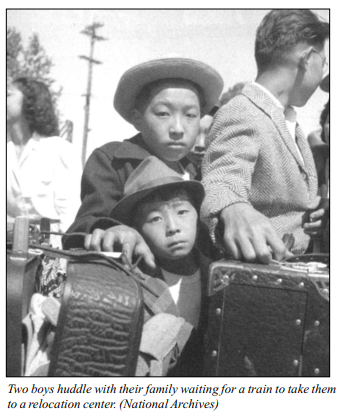
Supreme Court affirms Korematsu’s conviction and upholds the validity of Civilian Exclusion Order No. The United States.ĭecember 18, 1944: The U.S. Supreme Court hears oral arguments in Korematsu v. Supreme Court grants certiorari in Korematsu v. 1943).)įebruary 2, 1944: “A petition for certiorari in Korematsu’s case is filed with the Supreme Court.” The United States, 140 F.2d 289 (9th Cir. 432 (1943).)ĭecember 2, 1943: The Ninth Circuit affirms Korematsu’s district court conviction from September 8, 1942. Supreme Court answers the certified question affirmatively, so that the Ninth Circuit Court of Appeals does have jurisdiction to hear Korematsu’s appeal of the district court’s ruling. Supreme Court, asking whether it has jurisdiction to hear Korematsu’s appeal. 432 (1943).)įebruary 19, 1943: The “Ninth Circuit hears oral argument from counsel for Korematsu and two other Japanese-Americans (Minoru Yasui, and Gordon Hirabayashi).”ĭate Unknown: The Ninth Circuit submits a certified question to the U.S. 97a, and the orders issued thereunder.” He is placed on probation for five years. September 8, 1942: Fred Korematsu is “found guilty by the District Court for the Northern District of California of remaining in the City of San Leandro, California, in violation of 18 U.S.C. Procedural History of Fred Korematsu’s Court Case May 30, 1942: Fred Korematsu is arrested for “ failure to report to a relocation center.” 34 is issued, “ ordering exclusion of persons of Japanese ancestry from the area where the Korematsu family resided.” May 3, 1942: Civilian Exclusion Order No.

March 24, 1942: “The first Civilian Exclusion Order is issued by the Army, giving families one week to prepare for removal from their homes.”

March 21, 1942: Public Law 503 is enacted, “ making it a crime to violate military orders issued pursuant to Executive Order 9066.” March 18, 1942: The War Relocation Authority is established “ to oversee the relocation of Japanese-Americans and relocation centers.” DeWitt, head of the Western Defense Command, divides parts of the West Coast into Military Area 1 and Military Area 2, from which people of Japanese ancestry would be excluded.” 116, approving President Roosevelt’s request.įebruary 19, 1942: President Roosevelt issues Executive Order 9066, titled, “Authorizing the Secretary of War to Prescribe Military Areas,” “from which any or all persons may be excluded, and with respect to which, the right of any person to enter, remain in, or leave shall be subject to whatever restrictions the Secretary of War or the appropriate Military Commander may impose in his discretion.” That same day, Congress passes a joint resolution, S. Historical Timelineĭecember 7, 1941: Japan launches an attack on “ the United States Naval Base at Pearl Harbor, Hawaii Territory, killing more than 2,300 Americans.”ĭecember 8, 1941: President Franklin Roosevelt delivers his " Day of Infamy Speech" and asks Congress to declare war on Japan. The United States court case as context for the February 17th CLE. In the meantime, read below for an overview of the historical background and procedural history of the Korematsu v.
KOREMATSU V UNITED STATES 1944 REGISTRATION
The United States.” More information and registration information will be forthcoming in early 2022.
KOREMATSU V UNITED STATES 1944 FREE
Hainsworth Law Library, in conjunction with Stop Repeating History, will present a free CLE entitled, “80 Years Later: The Legacy of Japanese American Incarceration and Korematsu v. Justice Black wrote the majority opinion in Korematsu.On February 17, 2022, the Harris County Robert W.

This 6-3 deci- sion upheld Fred Korematsu’s conviction for violating the exclusion order. United States (1944), the Justices upheld the military’s exclusion of Japanese-Americans from certain “zones” on the West Coast. Second, in Ex parte Endo (1944), the Court unanimously halted the military’s detention of Japanese-Americans in detention camps. United States (1943), the Justices unanimously upheld a curfew imposed against American citizens of Japanese ancestry on the West Coast. Over the next three years, the Supreme Court would consider the legality of three executive actions taken by the Roosevelt administration during the war against Japan. The following day, Congress declared war against Japan. Navy, which was docked in Pearl Harbor, Hawaii. On December 7, 1941, Japan launched a surprise attack on the Pacific Fleet of the U.S. Hawaii (2018): "Korematsu was gravely wrong the day it was decided, has been overruled in the court of history, and-to be clear-has no place in law under the Constitution."


 0 kommentar(er)
0 kommentar(er)
